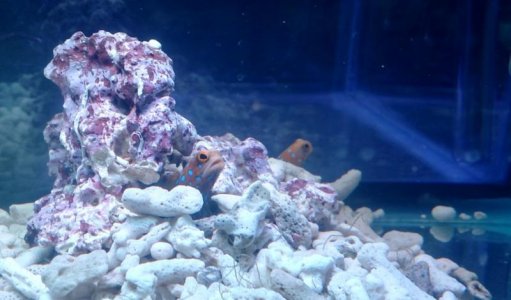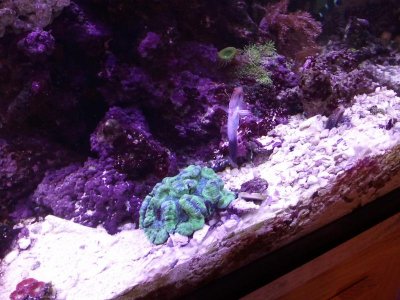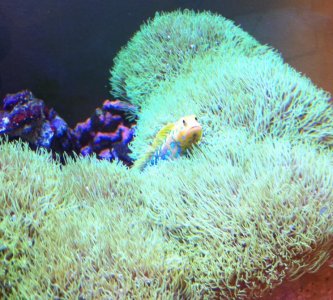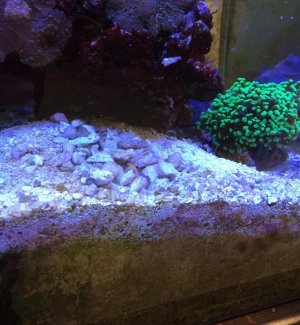ThRoewer
New member
I gave it another shot with Blue Spot Jawfish (LA had a killer 42% off deal on them)
My first 2 attempts failed:
First two from LFS: male died of BSJD, female jumped into the quarter sized opening of a EHEIM surface skimmer while in antibiotics treatment.
Second two from LiveAquaria: both died hours after I got them.
Third two from LiveAquaria: Looking good so far. They arrived without any visible symptoms of disease. Also, from the looks of it, it seems LA (QM actually) got it right with picking a male and a female by my instructions. So far no aggression.
Despite enough space in the QT and initially taking shelter in another prebuild burrow, the smaller one (female) decided to move and build her burrow underneath the (small) rock where the large one (male) made his burrow and seemingly he didn't mind it.

Now it's to hope that they don't get sick ... or would it be better to dose the tank with CP prophylactically?
My first 2 attempts failed:
First two from LFS: male died of BSJD, female jumped into the quarter sized opening of a EHEIM surface skimmer while in antibiotics treatment.
Second two from LiveAquaria: both died hours after I got them.
Third two from LiveAquaria: Looking good so far. They arrived without any visible symptoms of disease. Also, from the looks of it, it seems LA (QM actually) got it right with picking a male and a female by my instructions. So far no aggression.
Despite enough space in the QT and initially taking shelter in another prebuild burrow, the smaller one (female) decided to move and build her burrow underneath the (small) rock where the large one (male) made his burrow and seemingly he didn't mind it.
Now it's to hope that they don't get sick ... or would it be better to dose the tank with CP prophylactically?




